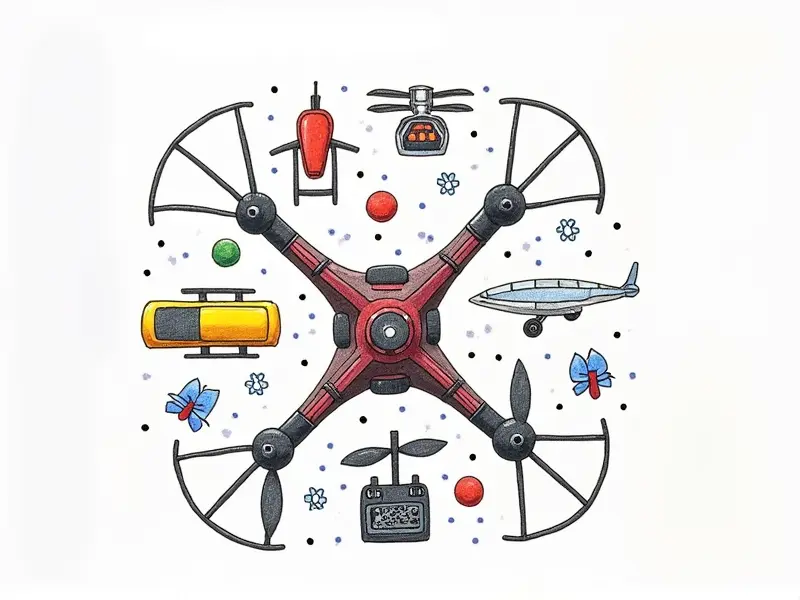How to calibrate RC servos?

Mastering RC Servo Calibration in Minutes
Calibrating your remote control (RC) servos is a crucial step to ensure optimal performance and precision in your RC models. Whether you're flying drones, controlling cars, or maneuvering boats, proper servo calibration can make all the difference between mediocre and excellent results.
Step-by-Step Guide to RC Servo Calibration
The process of calibrating an RC servo involves setting its range and neutral position accurately. This ensures that your controls are responsive and reliable during operation. Follow these steps for a smooth calibration:
- Power Up Your Equipment: Turn on the transmitter, receiver, and any battery-powered components.
- Access Calibration Menu: Most modern RC systems have an easy-to-use menu that allows you to adjust servo settings. Look for options like 'Servo', 'Trims', or 'Calibration'.
- Set Neutral Position: Move the control stick to its center position and set this as the neutral point of your servo.
- Determine Range Limits: Adjust the range limits by moving the control stick fully in both directions. This sets the maximum travel for each axis.
Easy Guide to RC Servo Calibration
Calibrating servos can seem daunting at first, but with a clear understanding of the process and some practice, it becomes second nature. Here’s a quick overview:
- Start Clean: Before you begin, make sure your RC equipment is fully charged.
- Read Documentation: Refer to the manual for specific instructions on how to access and use the calibration menu.
- Test Movements: After setting up, test each servo’s movement to ensure it operates correctly without binding or lagging.
Achieving Precision with RC Servo Calibration
Precision is key when calibrating servos. A small misalignment can lead to significant issues in performance and control:
- Use Fine Adjustments: Make incremental adjustments rather than large changes to fine-tune your settings accurately.
- Verify Each Setting: Confirm that each servo operates smoothly and precisely after making any adjustment.
Optimize Flight Control: Calibrate RC Servos
In the context of flight control, precise servo calibration is essential for stability and maneuverability. Here are some tips:
- Airborne Testing: Test your servos in a controlled environment to ensure they respond correctly during flight.
- Monitor Performance: Keep an eye on how the aircraft behaves under different conditions and make adjustments as needed.
Simple Tips for Accurate RC Servo Tuning
Tuning your servos accurately can enhance overall performance. Consider these simple tips:
- Check for Binding: Ensure that the servo’s gears and linkages are not binding or restricted in any way.
- Use Quality Components: Invest in high-quality servos and hardware to minimize issues down the line.
Perfect Your RC Setup with Servo Tuning
A well-tuned servo setup can transform your RC experience. Follow these steps for a perfect calibration:
- Start Fresh: Begin by resetting all servos to their default settings before making any adjustments.
- Test Thoroughly: After tuning, test each servo individually and then as part of the entire system.
Why Proper RC Servo Calibration Matters
The importance of proper servo calibration cannot be overstated. It affects everything from basic maneuverability to advanced aerobatics:
- Enhanced Control: Precise calibration ensures that your controls respond exactly as intended.
- Better Performance: Optimized servos lead to smoother operation and better overall performance of your RC model.
Beginner's Guide to RC Servo Adjustment
If you're new to servo calibration, here’s a basic guide to get started:
- Familiarize Yourself: Spend time understanding the components and how they interact.
- Seek Advice: Consult experienced RC enthusiasts or online forums for additional guidance.
Essential Steps for RC Servo Calibration
To ensure your servos are properly calibrated, follow these essential steps:
- Identify Neutral Point: Determine the precise neutral position of each servo.
- Set Range Limits: Define the maximum travel for each axis to prevent overextension or underreach.
Top Tricks for Efficient RC Servo Calibration
Here are some advanced tricks that can make your calibration process more efficient and effective:
- Leverage Software Tools: Use specialized software to automate the calibration process, saving time and effort.
- Monitor Feedback: Pay close attention to how your model responds during testing phases to identify areas needing adjustment.
Conclusion
Mastery of RC servo calibration is a fundamental skill for any hobbyist or professional in the field. By following these detailed steps and tips, you can ensure that your servos are perfectly tuned, leading to better control and performance. Whether you're just starting out or looking to refine existing setups, proper calibration is key to achieving excellence in RC modeling.

